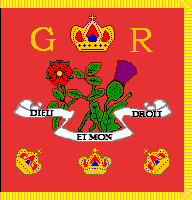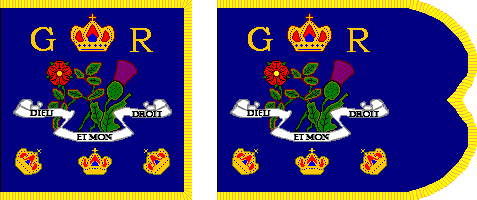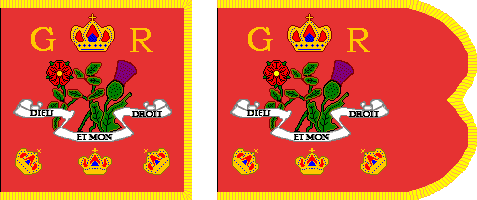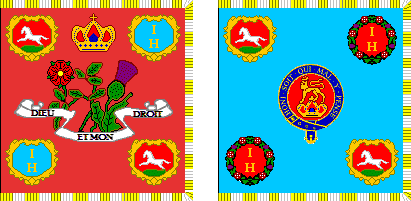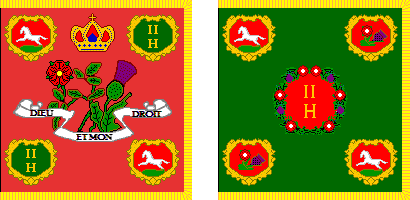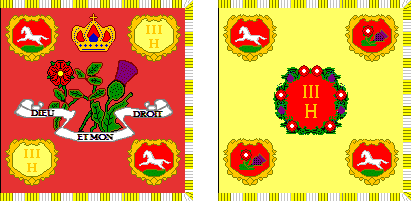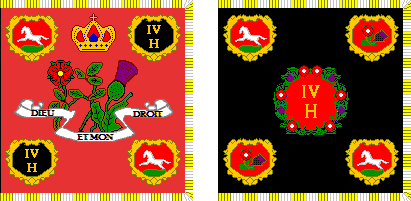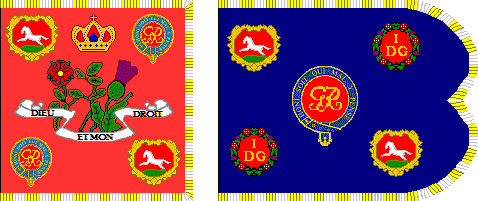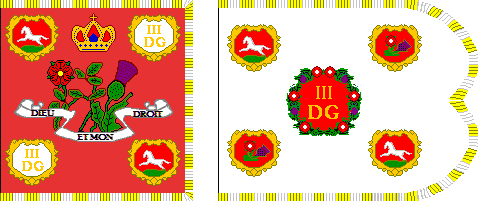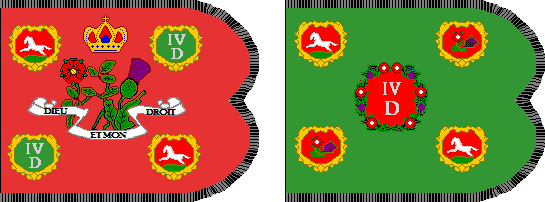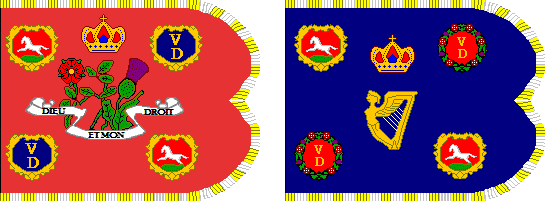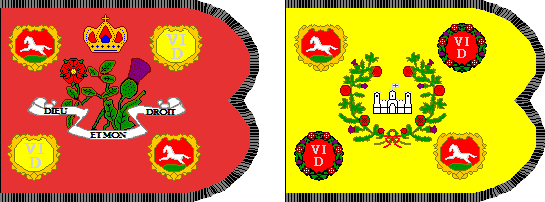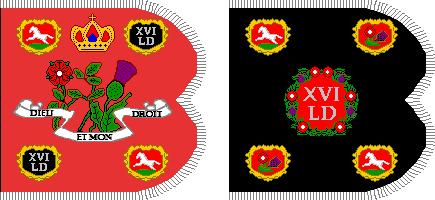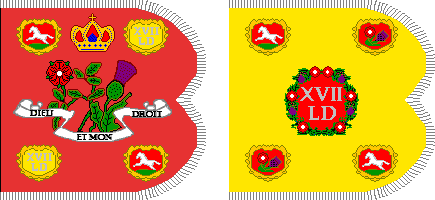|
|
|
HIS MAJESTY'S HORSE |
|
|
|
BRITISH
CAVALRY REGIMENTS
• EIGHTEENTH CENTURY |
By the time of the Seven Years War the line cavalry of the British Army consisted of regiments of Horse, Dragoon Guards, Dragoons and Light Dragoons. The Horse regiments had mostly been raised in the 1680s under various names, e.g. the 4th Horse started life as Lord Cavendish's Regiment of Horse in 1688. The 1st (King’s) Regiment of Dragoons was raised as early as 1661, but most of the others were raised between the 1680s and 1715. Originally the Dragoons had been mounted infantry, but by the middle of the eighteenth century their equipment, training and employment were little different from the rest of the cavalry. Light Dragoons appeared in the mid-eighteenth century, meeting the army's need for mounted troops to carry out patrols, screen marches and scout out the enemy. Despite their title the Dragoon Guards were not part of the Household Cavalry (royal guard). As an economy measure it was proposed in 1746 to convert three regiments of Horse to Dragoons, the latter being cheaper to maintain. Needless to say this idea was unpopular with the officers and troopers of the affected regiments, who would see their pay and perquisites reduced thereby. By way of compromise the converted regiments were titled Dragoon Guards, ranking behind the Horse but ahead of the Dragoons. The conversion involved a renumbering of the remaining regiments of Horse, e.g. the 5th Horse became the 1st Horse. The last four regiments of Horse were converted to Dragoon Guards in 1768. Cavalry regiments of all types were formed with two squadrons, for a total of about 400 officers and troopers. All three branches of the cavalry wore similar uniforms: a cocked hat, a red coat faced with the distinctive color of the regiment, breeches and riding boots. Exceptionally, the Royal Horse Guard wore blue coats. Troopers were armed with a straight sword, a musket and bayonet, and a pair of pistols. Like the foot regiments, each regiment of cavalry had two flags, either square standards or tailed guidons depending on the type of regiment. Regiments of Horse had a King’s Standard and a Regimental Standard, the Dragoon Guards had a King’s Standard and a Regimental Guidon, while the Dragoons and Light Dragoons had a King’s Guidon and a Regimental Guidon. The King’s Standard or Guidon was crimson with the floral badge of Britain, a rose and thistle conjoined under a royal crown with the royal motto. In the corners appeared the white horse badge of Hanover and the regimental number. The Regimental Standard or Guidon was in the facing color of the regiment. The basic design displayed the regimental number on a scarlet field within a wreath of roses and thistles, and royal badges in the corners. Some regiments, however, like the 6th (Inniskilling) Dragoons, were entitled to bear special badges on their Regimental Standard or Guidon. The guidons of the Light Dragoons were shorter on the fly than those of other regiments. The regiments of the Household Cavalry, the Royal Horse Guard and the Life Guard, had crimson King's Standards only: one per squadron. The two troops of Horse Grenadier Guards had a King's Standard and a Troop Guidon. Note on the Illustrations: For each regiment, the King's Standard or Guidon is depicted on the left and the Regimental Standard or Guidon on the right. Images Added December 2018 1st & 2nd Troops, Horse Grenadier Guards • 16th & 17th Light Dragoons |
